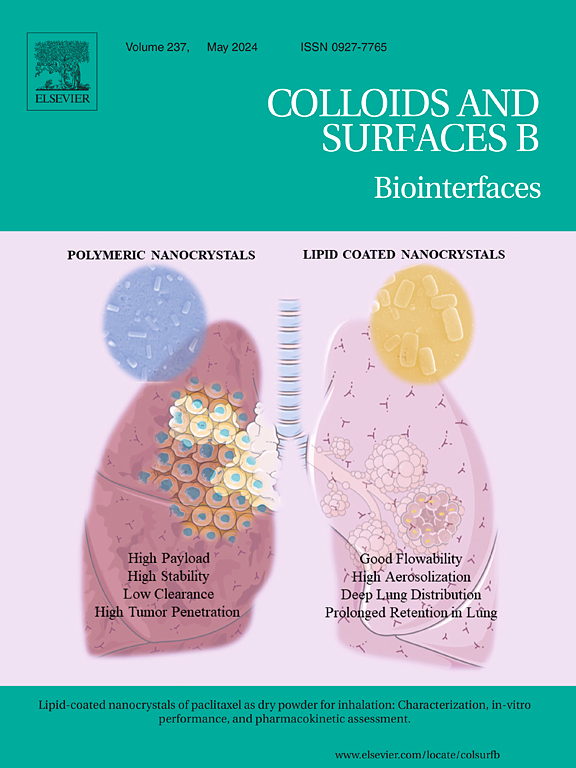Chitosan nanoparticles as a targeted delivery system for anti-fibrotic microRNAs for oral submucosal fibrosis treatment
IF 5.4
2区 医学
Q1 BIOPHYSICS
引用次数: 0
Abstract
Oral submucous fibrosis (OSF) is characterized by excessive extracellular matrix (ECM) deposition. Dysregulation of microRNAs (miRs) is involved in the progression of OSF, and miR manipulation could be a promising therapeutic approach. Nanoformulation can protect exogenous miRs against nuclease degradation and enhance cell retention. Accordingly, chitosan (CS), which possesses an anti-fibrotic capacity, is proposed to encapsulate miRs as nanoparticles (NPs) for treating OSF. miR-negative control (miR-NC)/CS NPs were fabricated by an ionic gelation method and characterized. Human oral submucosal fibroblasts were first subjected to arecoline stimulation to induce myofibroblast differentiation and were then transfected with a miR-145 inhibitor or miR-424 inhibitor using CS NPs. For CS NPs loaded with miR-NC, the particle size was 121.9 ± 0.1 nm with a polydispersity index of 0.162 ± 0.004 and zeta potential of + 22.4 ± 0.5 mV. Transfection of these two miRs downregulated mRNA levels of transforming growth factor beta 1, actin alpha 2 smooth muscle, collagen type I alpha 1 chain (COL1A1), COL3A1, COL4A1, matrix metalloproteinase 2, tissue inhibitor of metalloproteinase 2, and zinc finger E-box binding homeobox 1 in myofibroblasts. A Western blot analysis revealed that miR/CS NP transfection decreased alpha-smooth muscle actin and type 1 collagen protein products. Furthermore, the wound closure ability of stimulated cells was inhibited upon transfection. In conclusion. CS NPs are a good delivery vehicle for miR transfection. Transfection of a miR-145 inhibitor and miR-424 inhibitor inhibited the TGF-β signaling pathway and decreased ECM component production, and could thus be a promising treatment for OSF.
求助全文
约1分钟内获得全文
求助全文
来源期刊

Colloids and Surfaces B: Biointerfaces
生物-材料科学:生物材料
CiteScore
11.10
自引率
3.40%
发文量
730
审稿时长
42 days
期刊介绍:
Colloids and Surfaces B: Biointerfaces is an international journal devoted to fundamental and applied research on colloid and interfacial phenomena in relation to systems of biological origin, having particular relevance to the medical, pharmaceutical, biotechnological, food and cosmetic fields.
Submissions that: (1) deal solely with biological phenomena and do not describe the physico-chemical or colloid-chemical background and/or mechanism of the phenomena, and (2) deal solely with colloid/interfacial phenomena and do not have appropriate biological content or relevance, are outside the scope of the journal and will not be considered for publication.
The journal publishes regular research papers, reviews, short communications and invited perspective articles, called BioInterface Perspectives. The BioInterface Perspective provide researchers the opportunity to review their own work, as well as provide insight into the work of others that inspired and influenced the author. Regular articles should have a maximum total length of 6,000 words. In addition, a (combined) maximum of 8 normal-sized figures and/or tables is allowed (so for instance 3 tables and 5 figures). For multiple-panel figures each set of two panels equates to one figure. Short communications should not exceed half of the above. It is required to give on the article cover page a short statistical summary of the article listing the total number of words and tables/figures.
 求助内容:
求助内容: 应助结果提醒方式:
应助结果提醒方式:


